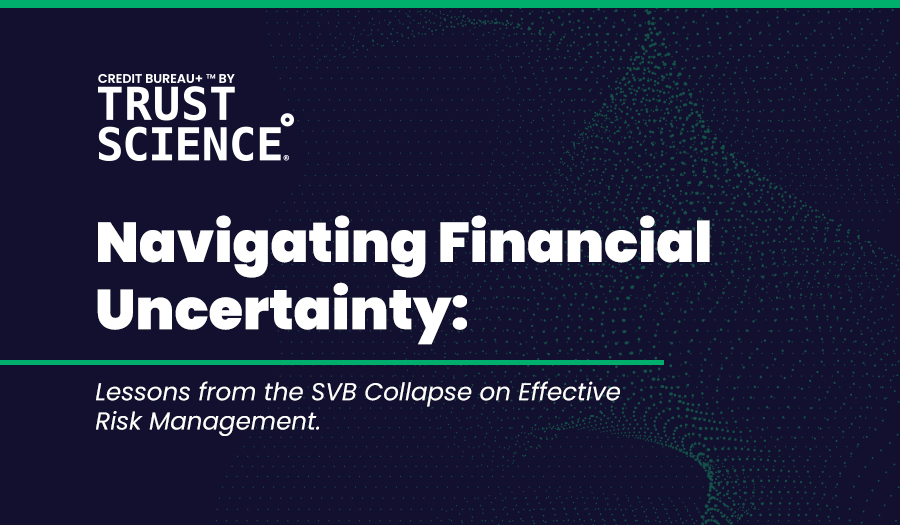Data Privacy and Security
Data protection and security is a key challenge for 21st-century companies handling large amounts of sensitive personal and financial information. Companies must take additional security measures to keep their data safe as security incidents continue to rise. According to a recent PWC report, 64% of security experts predict a rise in reportable ransomware and software supply chain incidents in the second half of 2021.
The key to mitigating security risks is to implement a reliable system for evaluating threats and the assets that need to be protected. Trust Science® uses four pillars to successfully identify assets and sensitivity to threats, these include: threats to these assets, vulnerabilities to threats, attacking assets, and identifying threat vulnerabilities. All four elements are used as procedural factors for risk assessment and threat mitigation.
Trust Science®, a FinTech SaaS delivering Credit Bureau 2.0®/Credit Bureau +™, provides Secure Sockets Layer (SSL) protocol to protect the information of its customers. The right FinTech company offers a range of security options for its customers and complies with national/international data protection and collection regulations to ensure that data is handled safely and efficiently. While choosing a financial partner, look for companies compliant with region-specific and industry-specific regulations like SOC 2, General Data Protection Regulation (GDPR), Personal Information Protection and Electronic Documents Act (PIPEDA), etc. The companies must offer confidentiality, secure access, private cloud deployment, and security management systems to keep their client’s data away from hackers.
Bias in Data and Algorithms
AI accesses and compiles large amounts of data that is already biased — most of the data is biased against populations based on gender, race, sexual orientation, and citizenship. As minority populations also coincide with race as well. This kind of bias perpetuates in the algorithms surrounding decisions on customer’s creditworthiness. A widely popular case of bias in algorithms is Apple in 2019, raised by the famous creator of Ruby on Rails. He and his wife applied for credit cards; he received ten times more credit limit than his wife. Even though they applied for joint taxes and his wife had a better credit score, the software discriminated based on gender. This is a prime example of how the AI algorithm manifests the social discrimination of society since it feeds on partial data.
AI algorithms should be adequately modelled, and data ethics training should be provided to data scientists. A company should also take managerial and ethical considerations into effect to function more optimally and in an inclusive manner. To ensure this, the company must take part in and consistently pass regular and voluntary compliance checks, which screen extensively for biased factors and results.
Black-box Effect
The black-box effect refers to a process where the inputs and outputs are visible, but there is little to no knowledge of the functioning and working of the tool/system. The working of AI models can often be a black box with no explanation of how the algorithm reached a specific output. Understanding what data was used, what approximations and data boundaries were used, what patterns were compiled by the algorithm, and the reason for a specific result will make AI modelled financial services more trustworthy amongst customers. FinTech companies should make sure that they extract complete explainability from data structures, inputs and outputs to remain legally compliant with the FCRA (and other regulatory bodies) and grow their customer base. But AI does not have to be a black box; there are ways to make it more explainable — Explainable AI.
Explainable AI includes systems and tools that make AI processes more intuitive for human understanding. It provides critical insights into the data used, variables affecting the decisions and recommendations made. It is important that customers know how companies calculate their credit scores using AI in lending. Trust Science® provides detailed reason codes for reduced scores, enabling lenders to objectively see how scores are derived and share that knowledge with applicants. This makes us transparent and honest in our function. It also obeys government regulation, allowing us to maintain our data integrity and operation compliance while also minimizing the possibility of adverse actions being exercised against us due to compliance failures.
Accountability
The use of AI algorithms in the FinTech sector also raises accountability and responsibility problems, i.e., who is responsible if something goes wrong. This is a grey area in AI because the AI model scientists often blame the system’s complex functioning and sophisticated algorithm for the mistake, thereby evading responsibility. Researchers and developers should be well-trained and aware of their responsibility regarding the AI systems they modelled. The right company will take responsibility for their mistakes in data handling and decision making.
These challenges can significantly impact the quality and credibility of an organization’s reputation and services. In this age of technological evolution, customer data is more vulnerable than ever before. And while AI has become a popular buzzword, the nuance and detail required to effectively leverage machine learning cannot be understated; especially as it relates to consumer data. Therefore, while choosing a company for your financial services, it is important to consider the measures taken by your company to protect sensitive customer information, manage it ethically, and ensure operational transparency when handling data inputs, outputs and processing systems.






